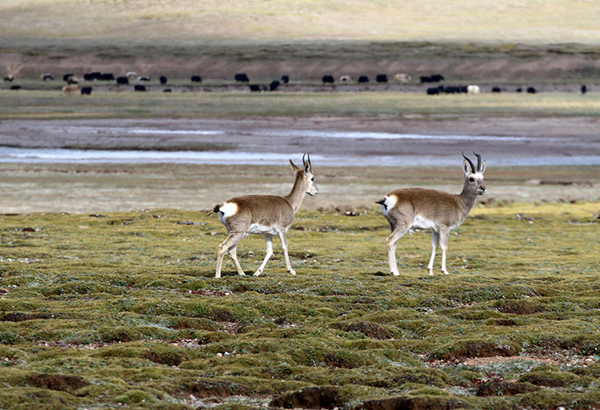China issues white paper on ecological progress on Qinghai-Tibet Plateau
Updated: 2018-07-18 (Xinhua)  Print
Print 



The Hoh Xil National Nature Reserve in Qinghai province is the country's most biologically diverse area. It's home to many species, including the Tibetan antelope. [Photo provided to China Daily]
BEIJING - China issued a white paper about ecological progress on the Qinghai-Tibet Plateau, which is a key eco-safety barrier in China and Asia, and a focus of the country's drive to promote ecological progress.
"The Communist Party of China and the Chinese government have taken ecological conservation as a top priority, and regard protection of the Plateau as a vital task for China's survival and development," said the white paper published by the State Council Information Office, titled "Ecological Progress on the Qinghai-Tibet Plateau."
Now a system in this regard is being improved step by step on the Qinghai-Tibet Plateau, with solid achievements in improving ecological conservation and environment quality, it said.
Steady growth has been witnessed in the local green industry with a system of technological support in place, and an eco-culture is taking shape to showcase the Plateau's exemplary role in ecological development, it added.
Located in southwest China, the Qinghai-Tibet Plateau covers the entire Tibet Autonomous Region and Qinghai Province, in addition to parts of Sichuan, Yunnan, Gansu and Xinjiang.
It is about 2.6 million square km in area and most of it lies at an altitude of more than 4,000 meters above sea level.
Hailed as the "roof of the world," the "third pole" and the "water tower of Asia," the Plateau is a natural habitat for rare animals and a gene pool of plateau life.








